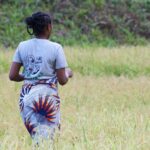Dans la nuit du 5 au 6 février 2022, le cyclone Batsirai a durement touché le sud-est de Madagascar traversant la région Vatovavy où Helpsimus est implanté.
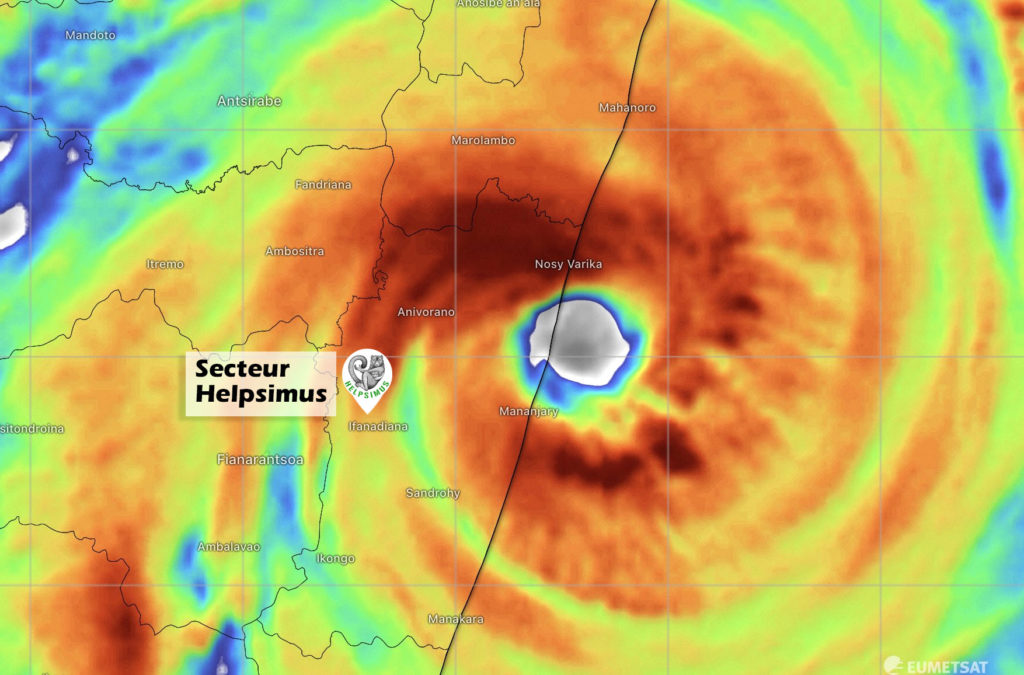
© Cycloneoi.com & Windy.com
Ce cyclone tropical de forte intensité a provoqué d’importants dégâts contraignant près de 2700 personnes à fuir leur maison dans la Commune rurale de Tsaratanana.
Les maisons en bois dont la toiture se compose de feuilles de Ravenala n’ont pas résisté à des vents de plus de 170 km/h avec des pointes à 235 km/h.
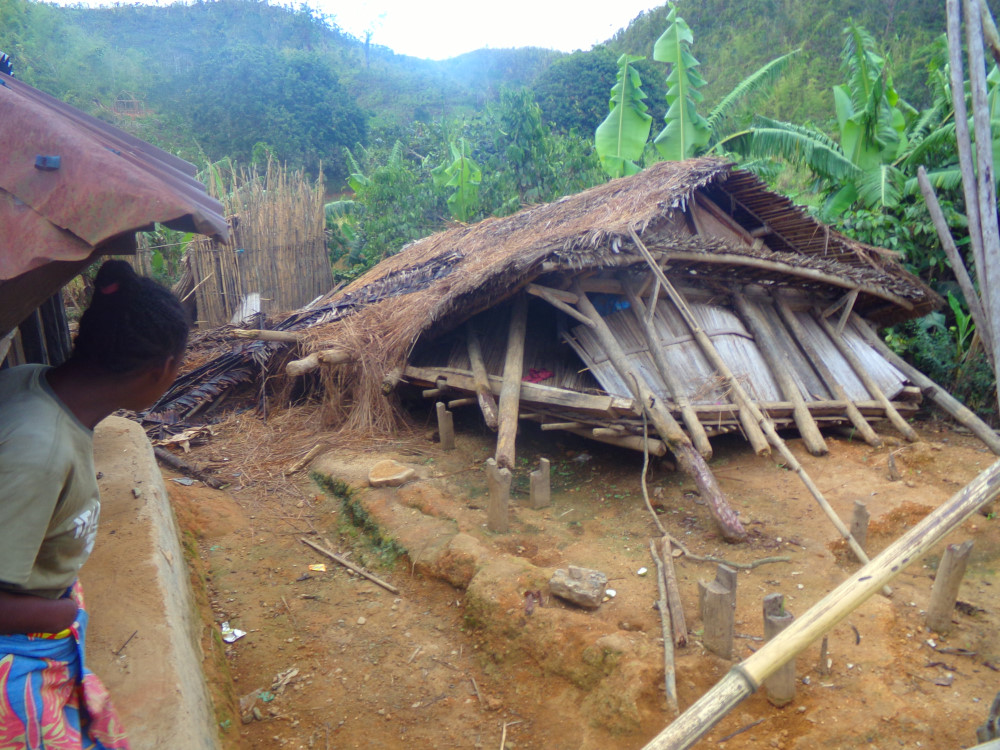
© Impact Madagascar
Les fortes pluies engendrées par le cyclone ont été à l’origine de graves inondations dans certains villages. L’eau est ainsi montée jusqu’à 3 m à Sahofika.
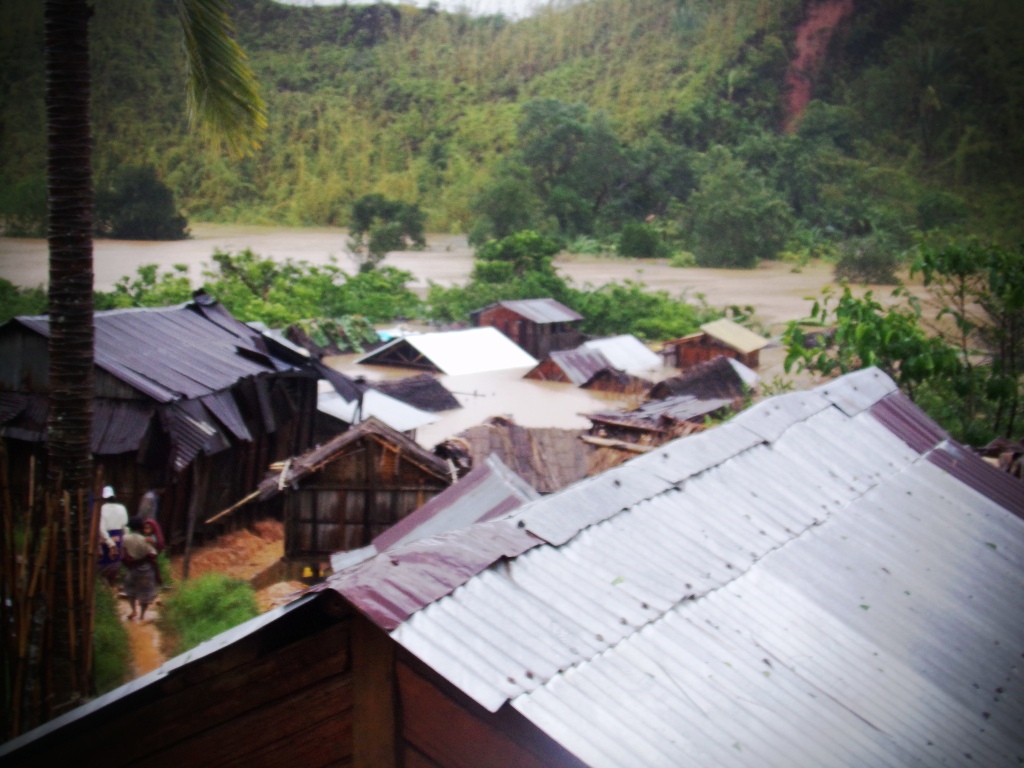
Village de Sahofika © Helpsimus
Beaucoup de routes ont été endommagées ou bloquées par la chute d’arbres isolant davantage de nombreux villages.
Les infrastructures scolaires comme les écoles de Sahofika et Ambodigoavy ont été parfois lourdement touchées.
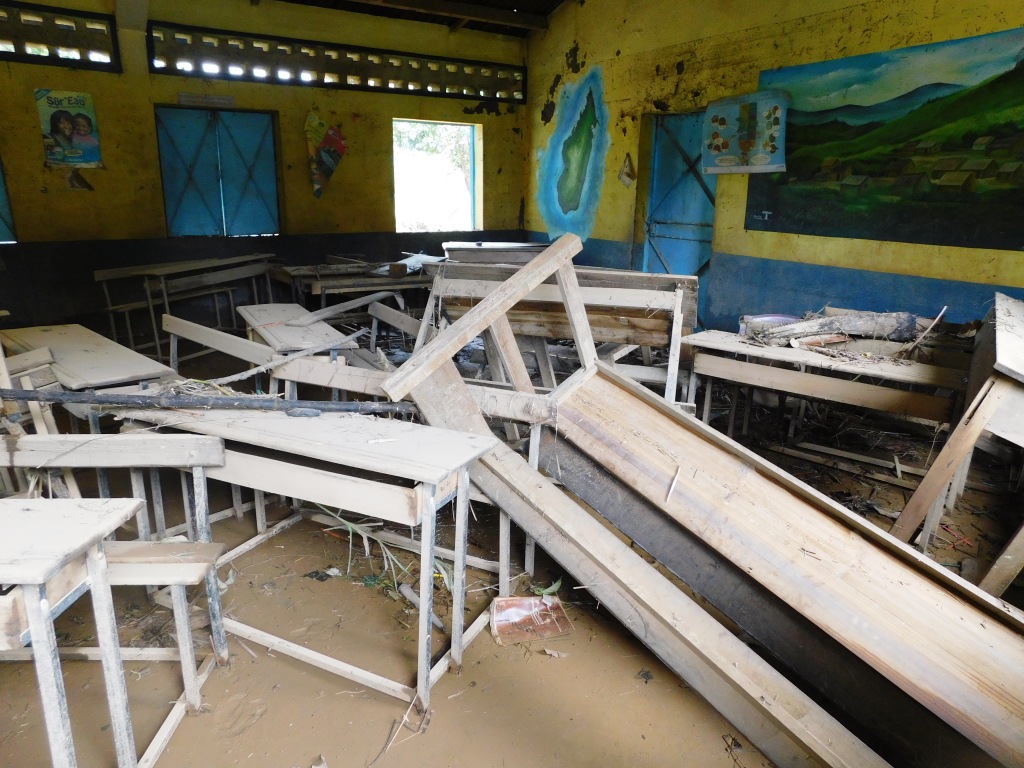
cole de Sahofika © Helpsimus
L’aspect le plus dramatique concerne les cultures puisque beaucoup d’entre elles ont été détruites.
C’est un vrai désastre pour les habitants de la commune de Tsaratanana qui, pour l’essentiel, pratiquent une agriculture de subsistance.
Enfin, les groupes de lémuriens, en particulier les grands hapalémurs, se sont dispersés nécessitant de renforcer leur suivi.
Nous mettons actuellement en œuvre un plan d’action pour faire face aux conséquences de ce cyclone et limiter les pressions sur l’habitat des lémuriens qui vont inévitablement augmenter dans les semaines/mois à venir.
Il consiste à :
- Apporter une aide humanitaire à la population : en février, nous avons distribué une aide d’urgence (nourriture & matériel) à plus de 600 familles dans nos 18 villages partenaires qui sera complétée au fur et à mesure des besoins identifiés ;
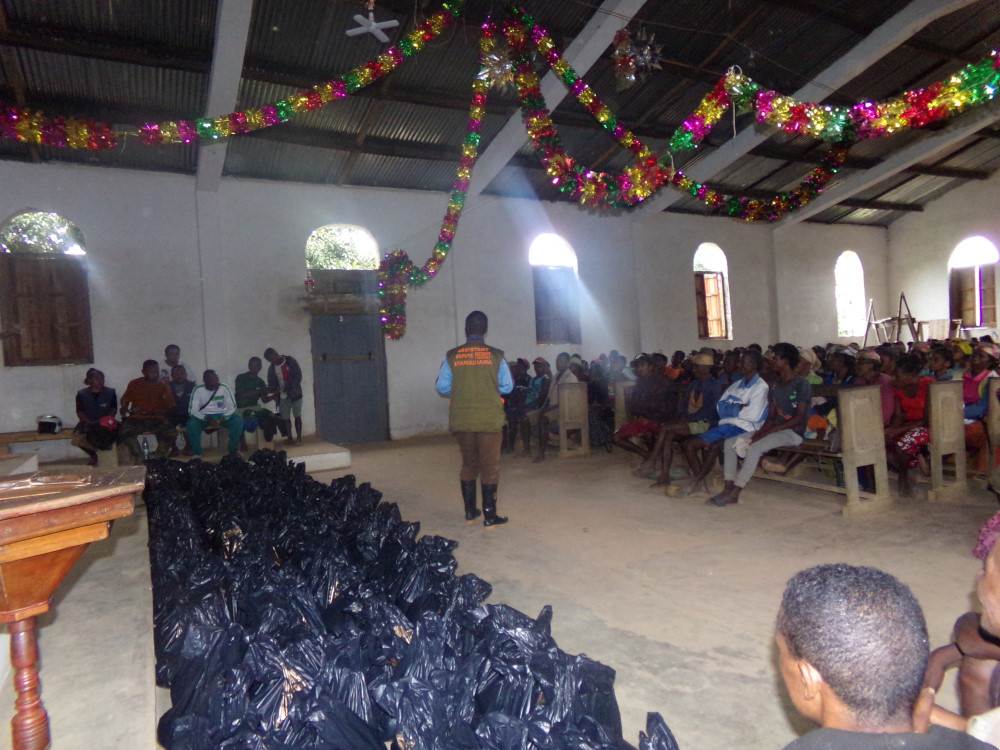
© Impact Madagascar
- Soutenir le redémarrage des cultures autour de nos villages partenaires : à part les rizières qui ont relativement bien résisté au cyclone (mais dont les rendements seront malgré tout très faibles à cause des inondations), toutes les autres cultures ont été détruites. Nous avons distribué des semences (haricots & légumes) à 610 familles qui bénéficieront également d’un accompagnement accru de nos agronomes. De plus, nous avons étendu le gardiennage des rizières à l’ensemble de notre zone d’intervention : l’équipe des gardiens est aujourd’hui composée de 68 personnes.
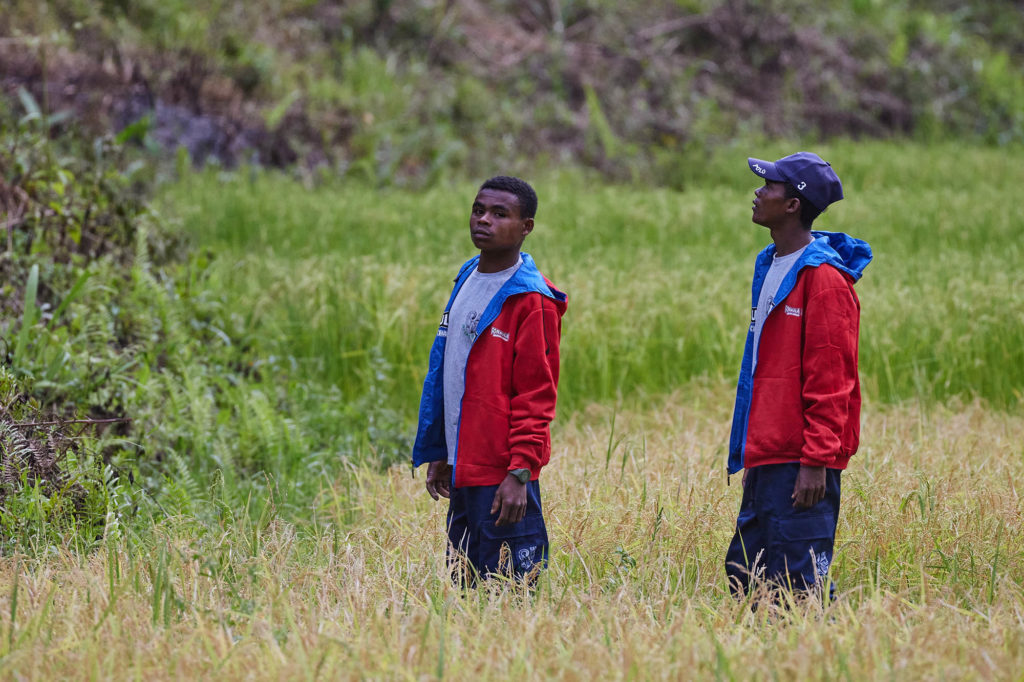
Gardiennage des rizières © S. Meys
- Soutenir le redémarrage du programme piscicole : la plupart des bassins piscicoles ont été inondés entraînant l’échappée des poissons. Une quinzaine d’entre eux ont été entièrement détruits. De plus des réparations seront certainement à faire sur beaucoup de bassins (en cours d’évaluation). Des alevins seront distribués aux 65 bénéficiaires du programme dont l’accompagnement sera également renforcé.
- Rompre l’isolement des villages les plus éloignés causé par la destruction des pistes et des ponts : le dernier pont de la piste avant Vohitrarivo a notamment été détruit. Ce pont est en cours de reconstruction (en dur cette fois).
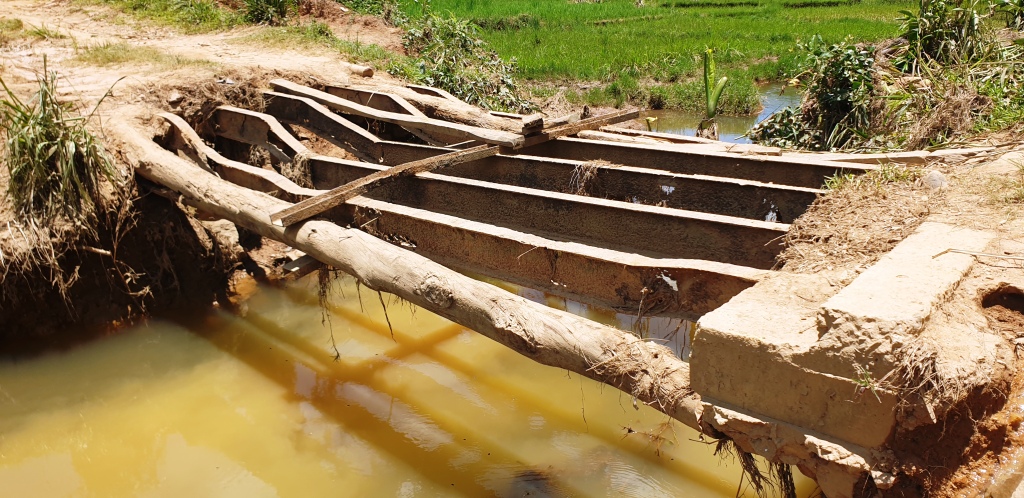
© Helpsimus
- Accompagner nos villages partenaires afin qu’ils limitent la pression sur les ressources naturelles : du matériel a été distribué pour aider la reconstruction des maisons (clous et fil de fer recuit).
- Renforcer la protection de l’habitat des lémuriens : il s’agit d’évaluer l’impact du cyclone sur les fragments forestiers, d’intensifier les contrôles sur les coupes de bois et d’appuyer les associations villageoises pour maîtriser la localisation des coupes et leur quantité.
- Renforcer le suivi des lémuriens : le cyclone a provoqué une dispersion importante des lémuriens, en particulier les grands hapalémurs (comptage : 600 avant le cyclone vs. 400 après). Les animaux n’ont pas disparu, ils sont juste très dispersés. Et comme ils sont également très mobiles, leur localisation et leur comptage sont beaucoup plus compliqués. Toutefois, nous nous attendons à une réorganisation des groupes qui pourraient être plus nombreux après qu’avant le cyclone dû aux déplacements des animaux. L’équipe des guides a été renforcée, en particulier sur le suivi des grands hapalémurs. Enfin, nous sommes en train de constituer une équipe afin d’étudier l’impact du cyclone sur les groupes de grands hapalémurs.
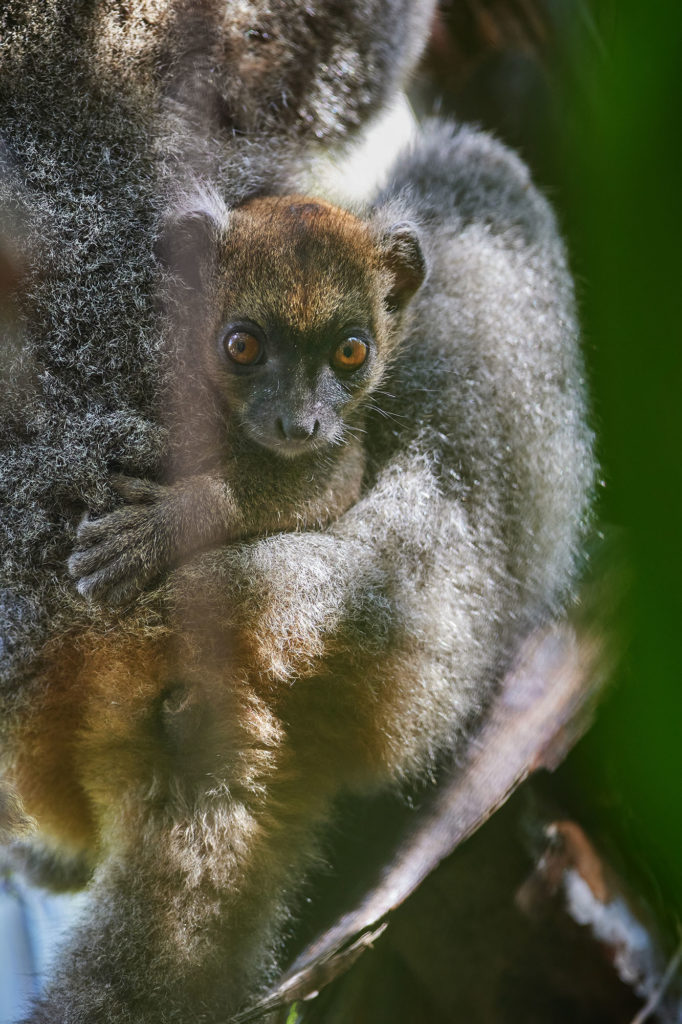
© S. Meys
- Redémarrer le programme de restauration forestière et de reboisement avec la remise en état des parcelles communautaires : en 2021, nos 3 pépinières ont produit plus de 22 000 plants, parmi lesquels 7000 plants d’espèces forestières dont 20 % ont été détruits par le cyclone. L’équipe des pépiniéristes a été renforcée par les jardiniers après la destruction des potagers scolaires.
- Soutenir l’éducation des enfants : les cantines scolaires seront prolongées après les vacances de Pâques et ce jusqu’aux vacances d’été. Les dégâts sur les écoles seront réparés (voir ci-dessous).
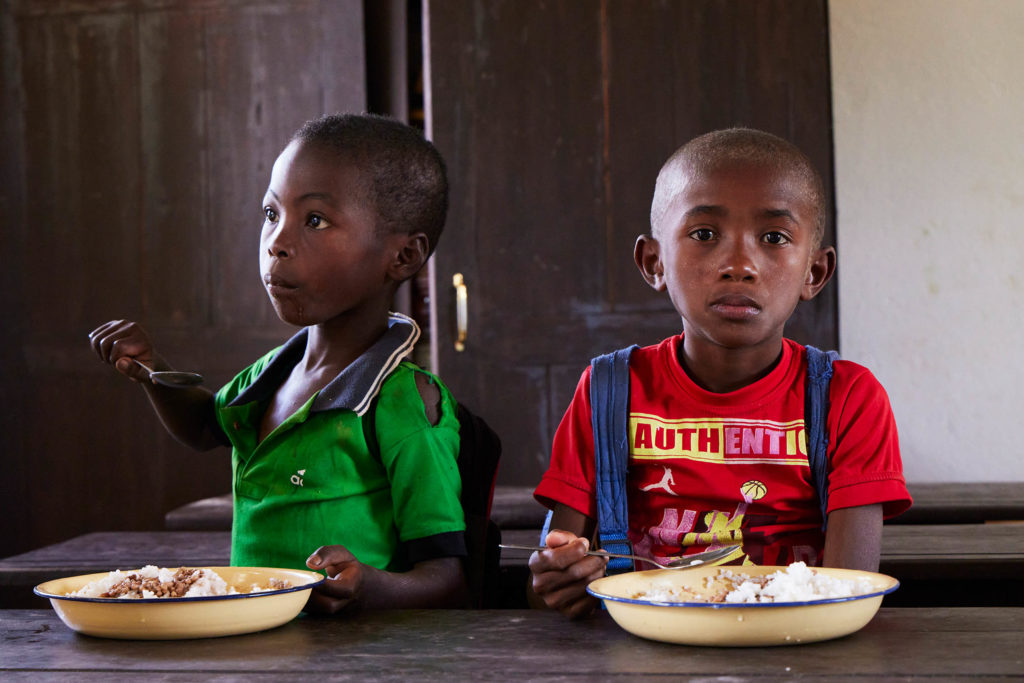
© S. Meys
Dans la commune de Tsaratanana, 27 écoles primaires et 2 collèges ont été complètement détruits par le cyclone.
Les 14 salles de classe en dur construites par Helpsimus ont dans l’ensemble bien résisté au cyclone.
Les dégâts sur nos infrastructures sont listés ci-dessous.
A Sahofika :
- Le bureau du VOI Samivar a été immergé pendant les inondations et la porte a été emportée par les eaux.
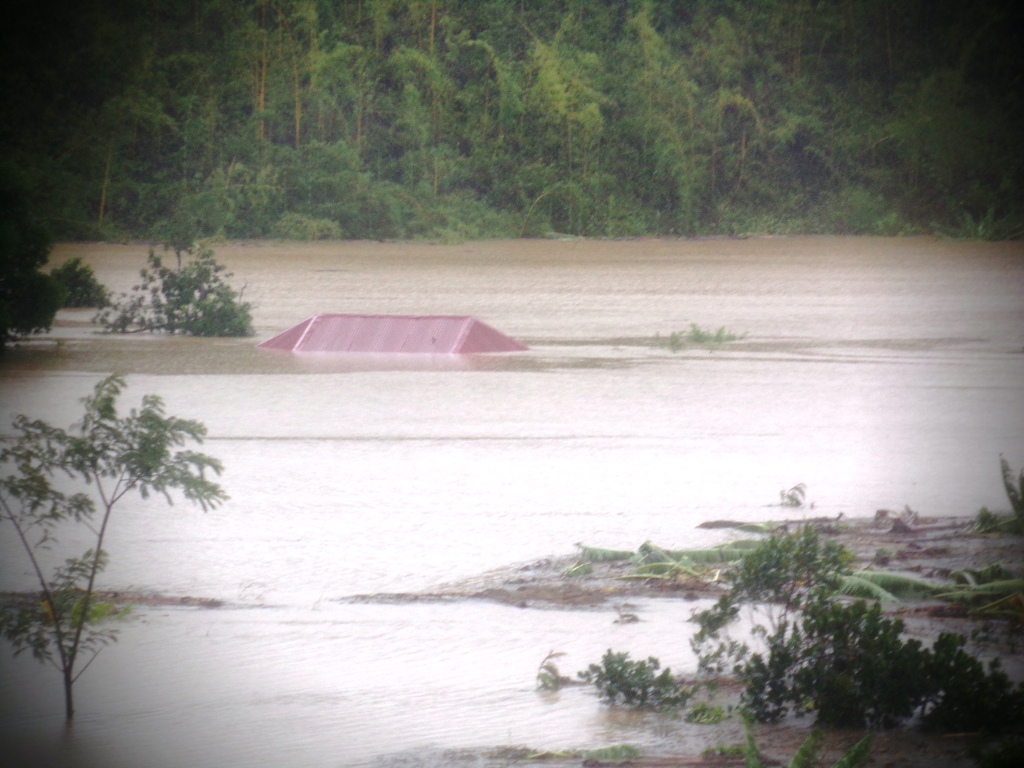
Bureau du VOI Samivar © Helpsimus
- L’état de la cuisine de la cantine scolaire (construite en 2016), sur laquelle il y avait déjà des réparations à faire, s’est aggravé.
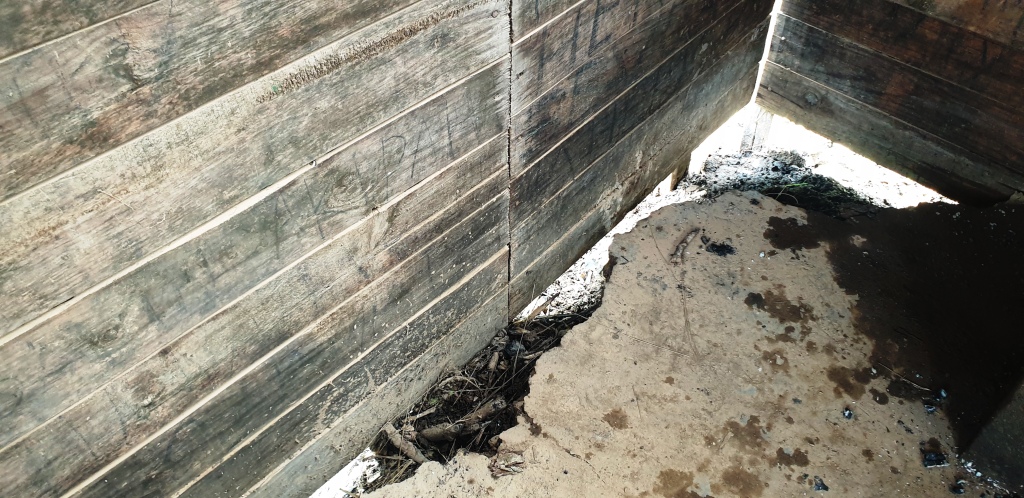
Cantine scolaire de Sahofika © Helpsimus
- Le campement, constitué d’infrastructures légères en bois et feuilles de Ravenala, a été détruit par le cyclone. Il sera reconstruit prochainement avec des infrastructures un peu plus pérennes : cuisine en semi-dur et réfectoire avec un toit en tôles.
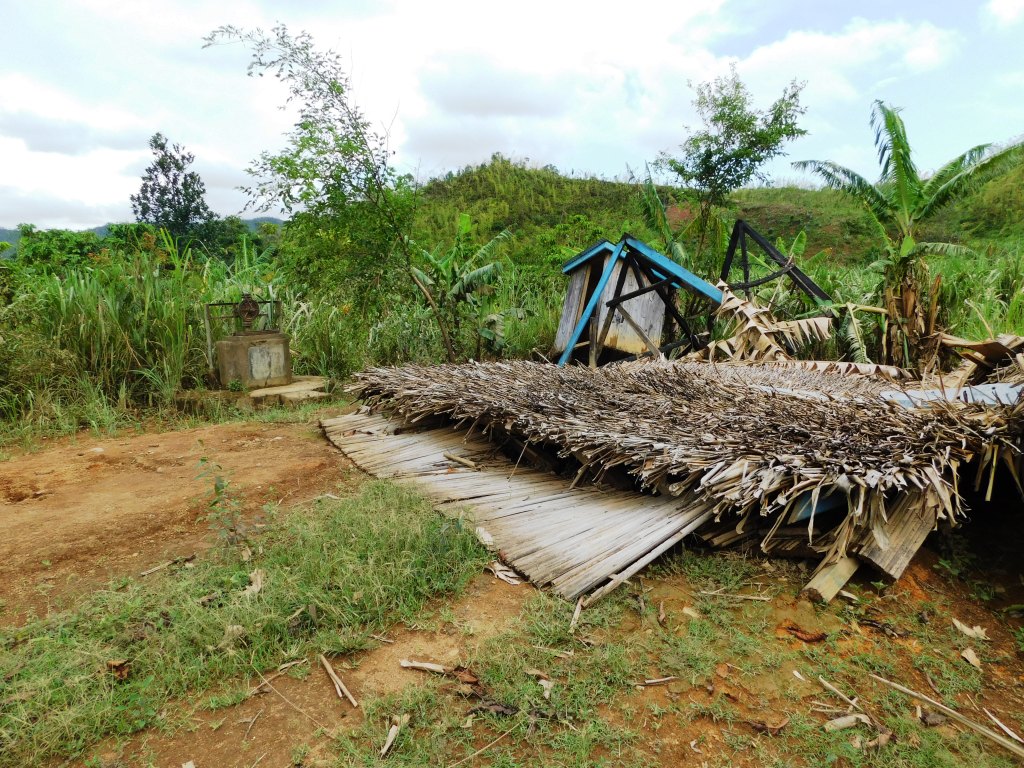
Camp de Sahofika © Helpsimus
- Toute l’installation électrique de l’école doit être remplacée : le local technique (abritant notamment les batteries), les prises, etc. ont été immergés.
- Le bâtiment scolaire en bois construit en 2013 par Helpsimus a été immergé par les inondations. Devenu vétuste avant le cyclone, il est aujourd’hui dans un état de délabrement avancé.
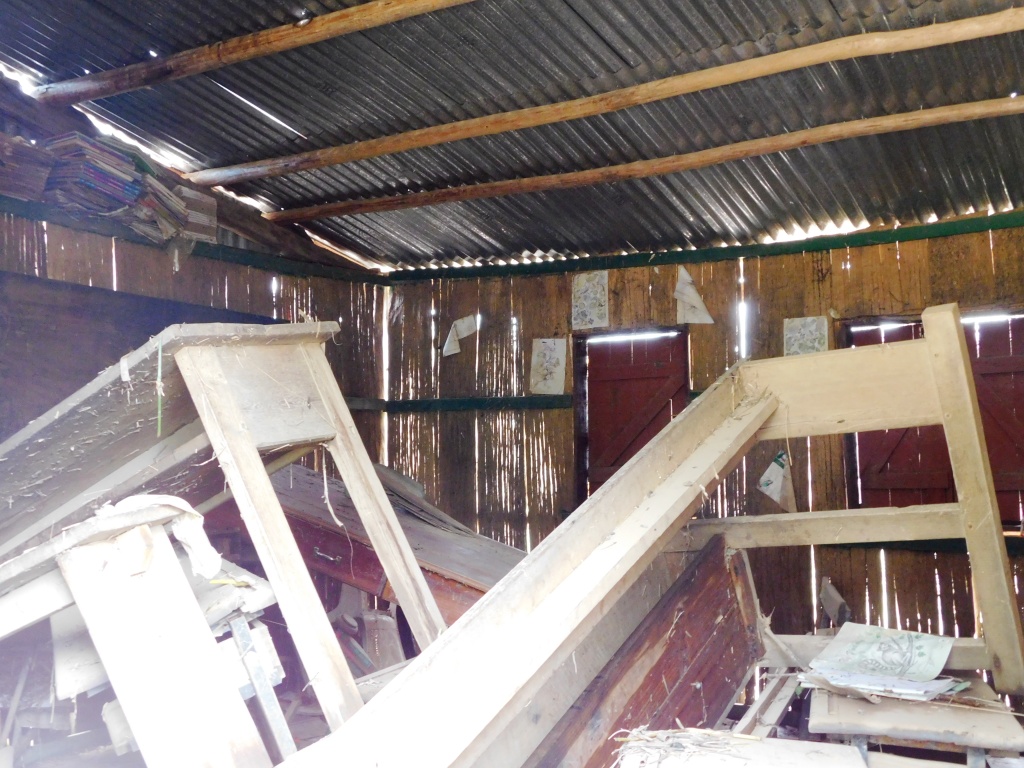
© Helpsimus
A Vohitrarivo :
- Deux passerelles (construites au-dessus des rizières pour le passage des grands hapalémurs) ont été détruites sur le territoire des groupes 1 et 2.

© Helpsimus
A Ambohipo :
- La liste des réparations à faire sur le bâtiment scolaire construit en 2018 (sur lequel de nombreuses dégradations ont été constatées en décembre 2021) s’est allongée après le cyclone : sol à refaire, trous à boucher dans les murs (dont 1 résultant d’une tentative d’effraction), peinture, etc.
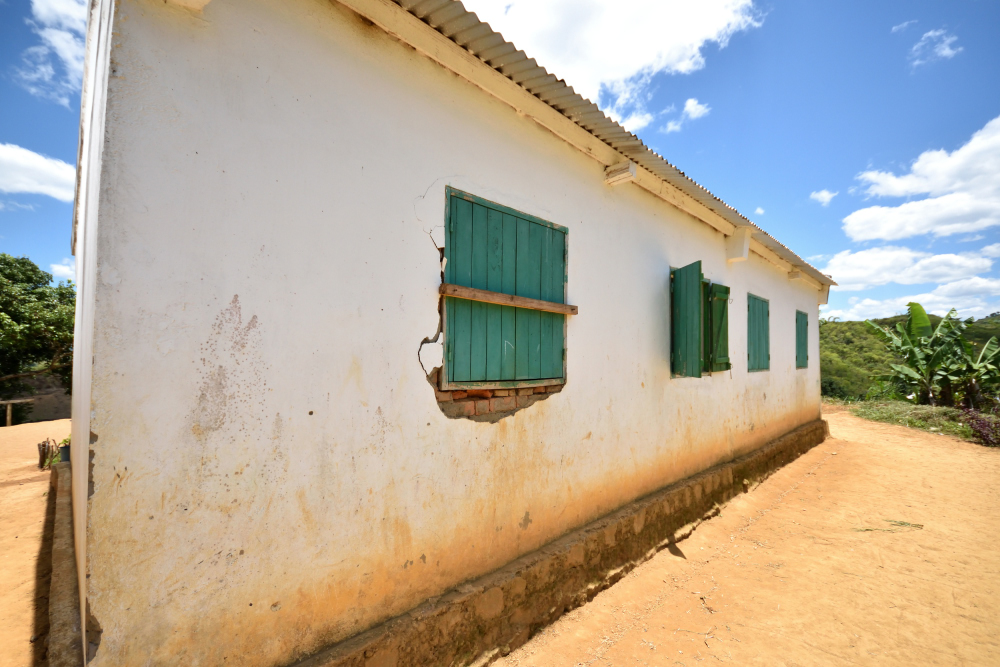
© D. Roullet
- Les faitières du bâtiment scolaire construit en 2021 ont été emportées par les vents violents qui ont également fait bouger les pannes de la charpente. La toiture qui a été ainsi fortement fragilisée est en cours de réparation.
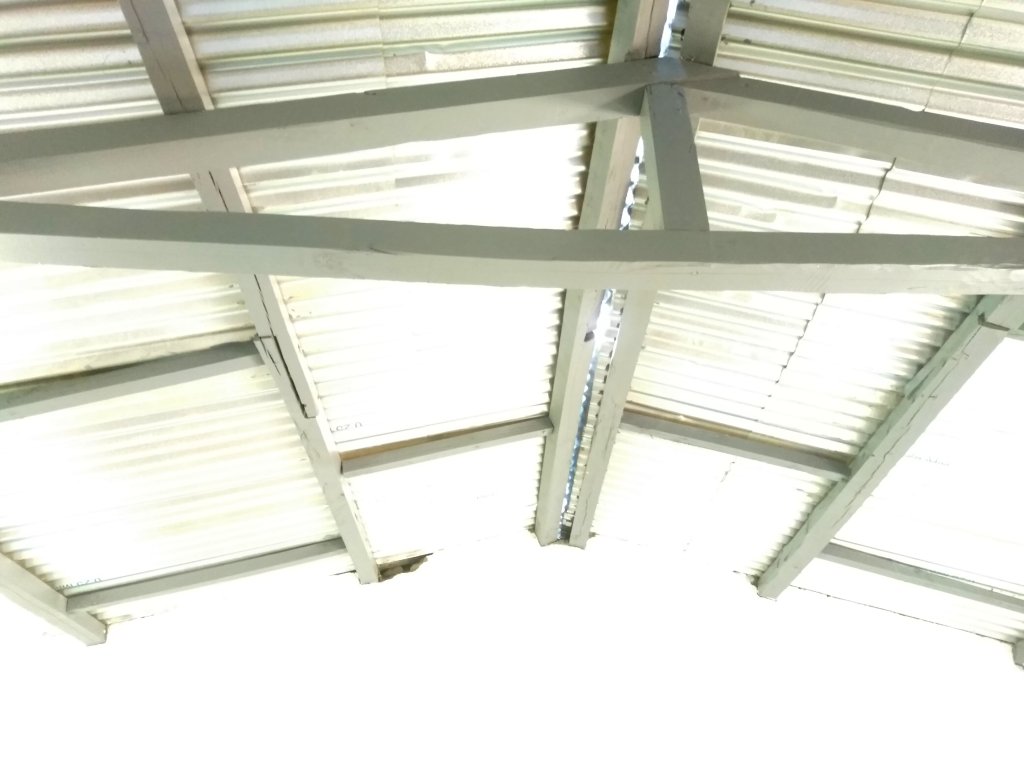
© Helpsimus
- Le vent a plié des tôles de la toiture de la cuisine scolaire (en cours de réparation).
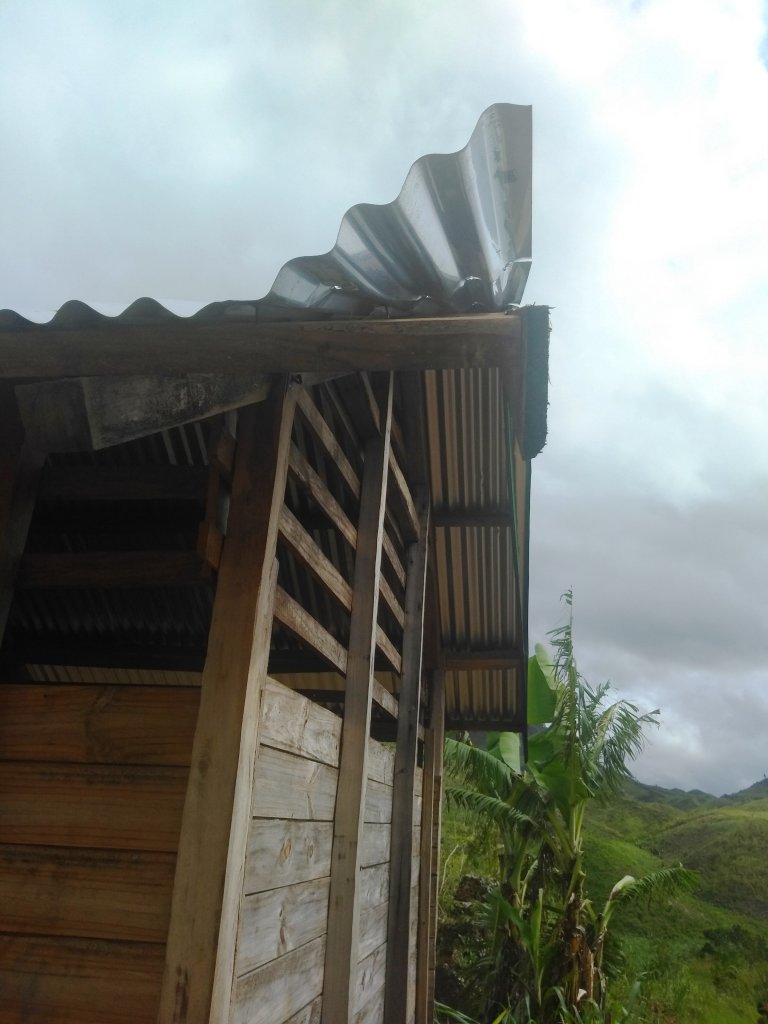
© Helpismus
A Ambodigoavy :
- Le campement de Volotara a subi des dégâts importants (le réfectoire a été emporté par les vents). Il sera reconstruit prochainement avec des infrastructures un peu plus pérennes (comme à Sahofika).

© Helpsimus
Des dégâts importants ont également été constatés dans les écoles de Sahofika et Ambodigoavy sur les bâtiments qui n’ont pas été construits par Helpsimus :
- Le bâtiment principal de l’école de Sahofika a été immergé lors des inondations engendrées par le cyclone (voir photo ci-dessus).
- Un mur (en terre) de l’un des bâtiments scolaires de l’école d’Ambodigoavy menace de s’effondrer (à cause de l’eau) et la toiture est rouillée. Le bâtiment est vétuste et dangereux. Un nouveau bâtiment scolaire en dur sera construit en 2022.
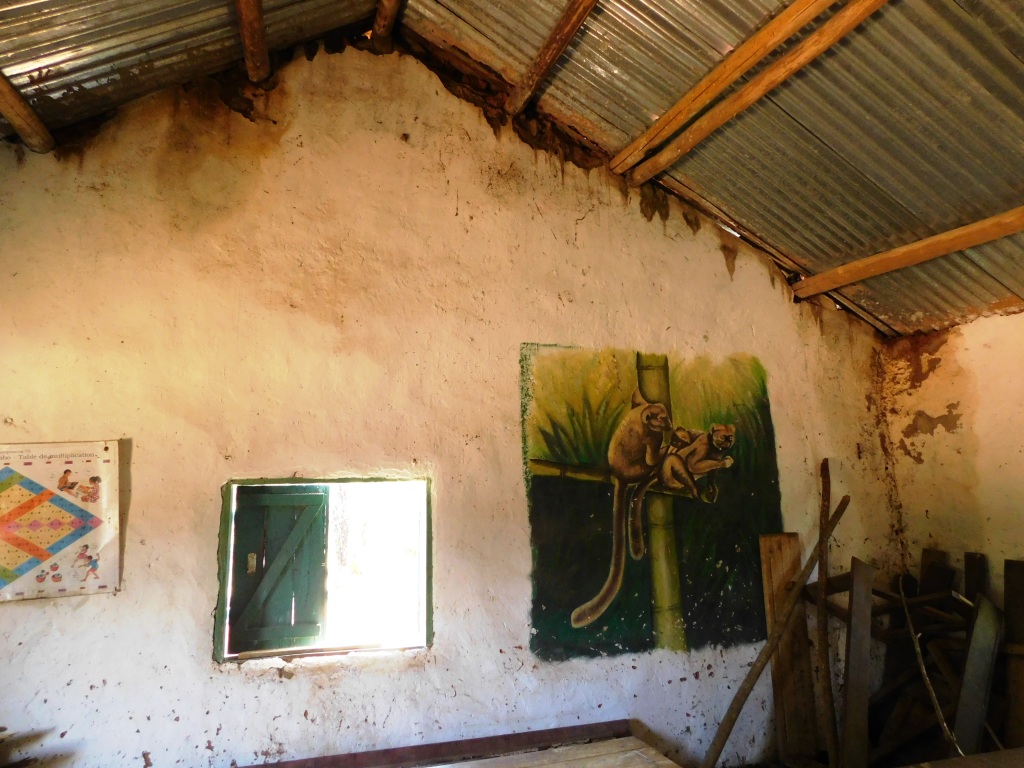
Ecole d’Ambodigoavy © Helpsimus
Le 22 février, un deuxième cyclone a traversé la région Vatovavy : il s’agit du cyclone Emnati qui fort heureusement n’a pas significativement alourdi le bilan du cyclone Batsirai.

Cyclone Emnati © Cycloneoi.com & Windy.com
Nous ne pourrons pas protéger les lémuriens et leur habitat sans renforcer le soutien aux populations locales et leur garantir un minimum de sécurité alimentaire.
Nous avons pu démarrer plusieurs des activités décrites dans le plan d’action grâce au soutien d’ores et déjà obtenu de certains donateurs que nous remercions chaleureusement.


